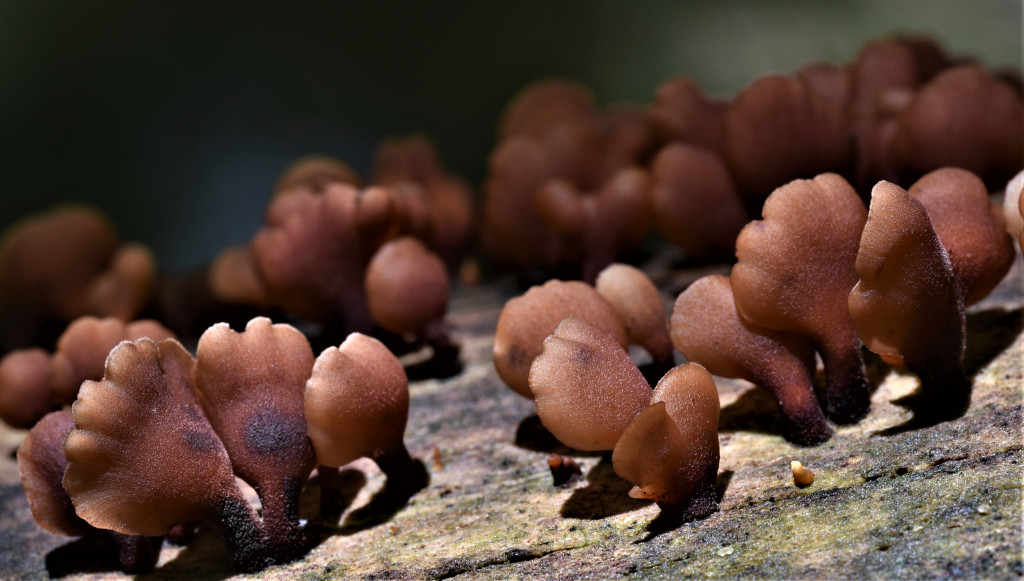
By Gerry Steinauer, Botanist
Jelly fungi have great names. Some are delicious sounding: jelly drops, orange jelly, golden jelly cone, apricot jelly and black jelly roll. At the other extreme, some are graveyard spooky: willow brain, goblin ear, jelly tongue, Judas’ ear and, best of all, witches’ butter.
Growing in forests, the appearance of these gelatinous mushrooms ranges from blobs of jelly spilled onto a decaying log, to ears sprouting from a tree trunk, to globs of brain tissue smeared on a branch.
Like other mushrooms, jelly fungi consist mainly of masses of extremely thin strands, called hyphae, that spread unseen through wood and function to digest and absorb nutrients. Their spore-producing fruiting bodies, the mushroom, are the gelatinous blobs.
Jelly fungi are not all closely related, as the gelatinous form has evolved separately in several mushroom families. Whereas typical mushrooms have rigid cell walls, those of the jelly fungi are extremely flexible. When moisture is present, such as during rainy spells, this flexibility allows the cells to swell with water and expand and the mushroom to produce spores.
During dry conditions, the cells contract to extremely thin, firm sheets, and the jelly fungi shrink into a dormant state. They can swell and shrink several times during a growing season. Whereas typical mushrooms fruit only once a year, the jelly fungi’s unique cells allow them to swell and produce spores several times a year, a great adaptation in periodically dry habitats.
